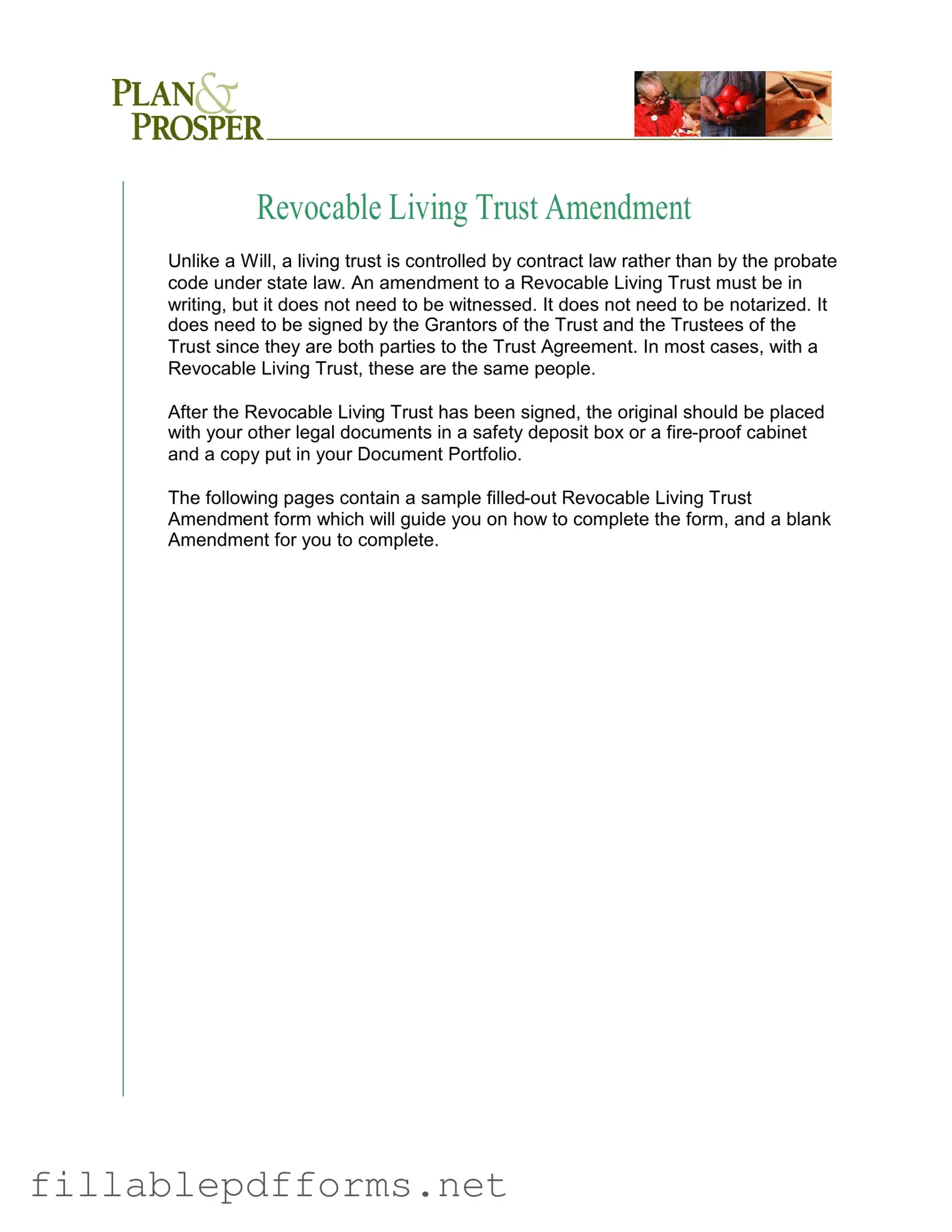The Trust Amendment form serves as a crucial document for individuals looking to modify their Revocable Living Trust. Unlike a Will, which is governed by probate law, a living trust operates under contract law, offering more flexibility in managing assets. This amendment must be documented in writing but does not require witnesses or notarization, simplifying the process for the Grantors and Trustees involved. Both parties must sign the amendment, as they are integral to the Trust Agreement. Typically, the Grantors and Trustees are the same individuals, making it easier to execute changes. Once the amendment is completed, it is advisable to store the original document securely, such as in a safety deposit box or a fire-proof cabinet, while keeping a copy in a personal Document Portfolio for easy access. This article will provide a sample filled-out Revocable Living Trust Amendment form, along with a blank version for personal use, ensuring that individuals can navigate the amendment process with confidence and clarity.
